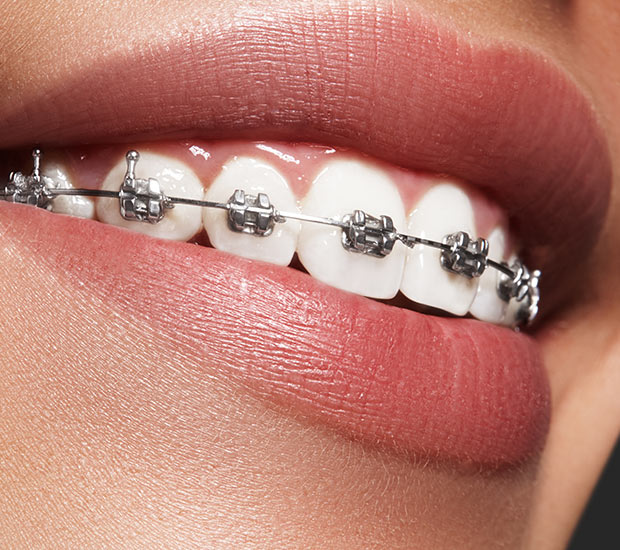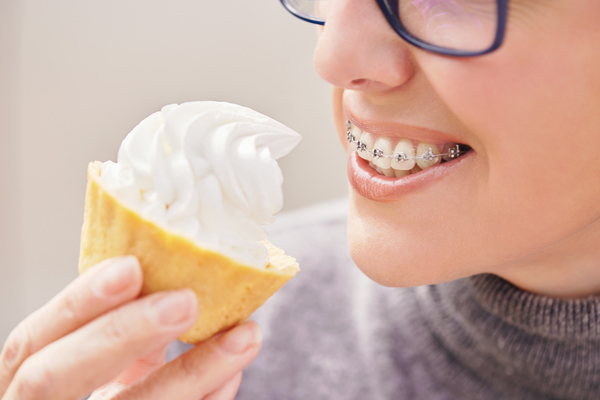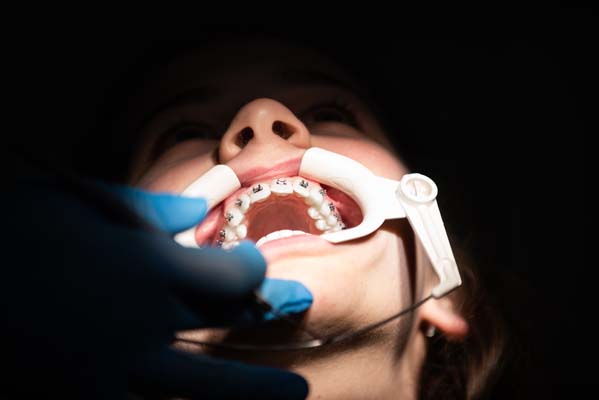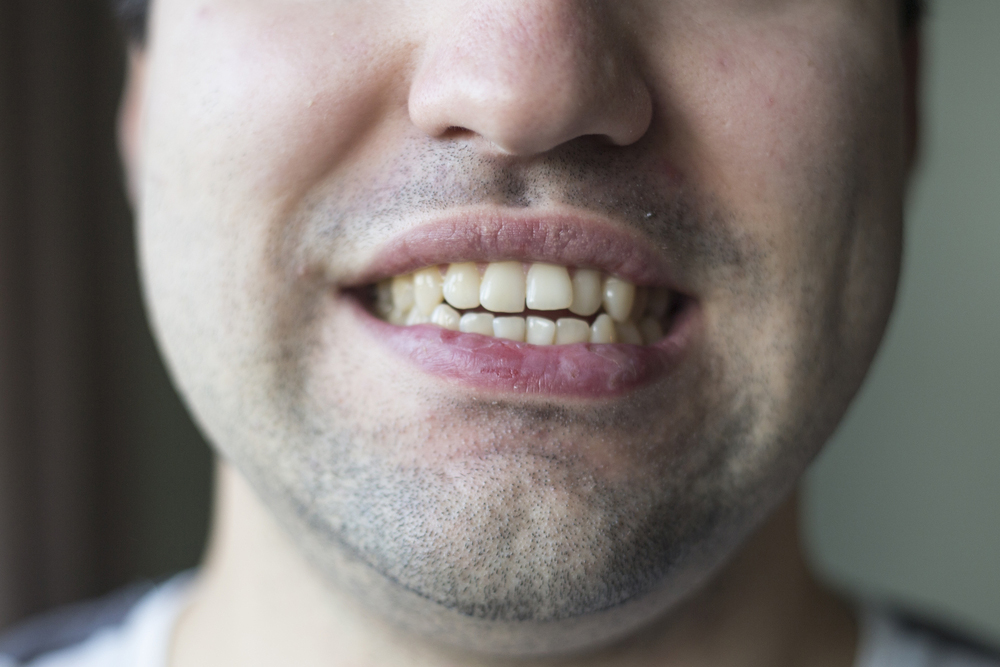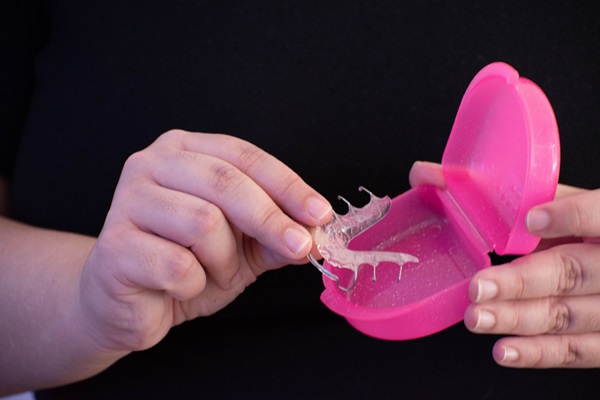Traditional BracesSeattle, WA
The idea and implementation of straightening teeth for both appearance and functionality began with traditional braces. With advancements in dental technology, braces have become less bulky and more efficient. Furthermore, many dental conditions can only be fixed with traditional metal braces.
Traditional braces consist of standard metal brackets placed on the teeth with an adhesive and a connective wire. We may periodically tighten the braces to allow for pressure and force to gradually move the teeth and align the jaw. They are sturdy and durable, making it extremely unlikely to break or damage them.
At Lovrovich Orthodontics in Seattle, we offer traditional metal braces for patients of all ages. We can discuss the difference between traditional braces and clear aligners, and determine the right treatment for you or your child. To learn more about our braces or schedule an appointment, call (206) 525-7000 today.
History of Traditional Braces
Archaeological findings reveal that braces have been used as a teeth-straightening method since 400-500 BC as gold wiring was found in various tombs in Egypt. Gold wiring was used as a binding for teeth and crudely-fashioned metal attachments were found on some teeth of mummified people. From then and throughout history, various materials have been used as teeth-straightening braces, including gold, platinum, silver, steel, rubber, vulcanite, wood, ivory, zinc, copper, and brass.
It was not until the late 1800s when major advances in dental technology brought about modern metal braces. Until the mid-1970s, braces wrapped around the entirety of the teeth with no separation. The metal brackets changed the way in which braces were secured and brought about the tightening method, making braces much more functional and efficient. Its rich history and evolving expertise make traditional braces widely used to this day.
Effectiveness of Braces
Today, braces are made of metal or ceramic material, wires, brackets, and bonding material that secures them to the teeth. This makes them extremely durable and very unlikely to break or become damaged. Nonetheless, it is crucial to care for the braces as well as your oral health to maintain proper hygiene during treatment.
Traditional braces come with a set of guidelines and restrictions to enable the fastest, most effective treatment. The Mayo Clinic finds that metal braces are generally very effective, but their effectiveness and treatment duration are largely affected by the patient’s adherence to their orthodontist’s instructions. If the patient is not abiding by the directions and teeth movement is not progressing properly, then it can prolong treatment.
Types of Braces
There are several types of braces to choose. We will recommend the type after reviewing the patient’s age, their spacing conditions, and their bite/alignment condition. Classic braces, often called archwires, are braces that are individually attached to each tooth with an archwire that puts pressure on the teeth and jawline. Elastic O-rings connect the archwire to the brackets.
Other types of braces include ceramic, lingual, and invisible braces. Ceramic braces are clear and less visible than metal braces. Lingual braces are placed completely behind the teeth, keeping them invisible. Invisible braces, or aligner trays, are removable and can be placed on and off throughout the day. Each type of braces has its own set of advantages.
Advantages of Traditional Braces
There are many advantages of traditional braces that keep them one of the most highly-used and requested teeth-straightening methods. In many cases, traditional metal braces are the only type of braces that can fix a variety of dental conditions. They are still considered the most effective solution for tough issues as ceramic and plastic are not strong enough to withstand these heavy shifts.
Other advantages of traditional metal braces include:
- Durability: they are made of steel and titanium and meant to last the entirety of treatment
- Health improvements: straight teeth significantly reduce tooth decay and cavities, and make good oral hygiene much easier to accomplish
- Time-efficient: advancements in orthodontics have allowed for shorter treatment times
- Affordable: traditional braces are the most cost-effective and are usually covered by insurance
- Provide constant care: care is never interrupted as with removable appliances; traditional braces constantly work 24 hours a day throughout treatment
- Work for everyone: the system is universally available and beneficially to almost anyone
Care and Maintenance
As with any teeth-straightening appliances, taking care of the teeth and mouth become more strenuous as much more is involved in both cleaning and maintaining the teeth and braces themselves. Most importantly, brushing and flossing are crucial for maintaining health teeth as plaque and tartar are easily trapped inside and around the braces. To clean out the braces, remove any elastics or removable parts of the braces and clean around the wires and pins of the braces, ensuring that all plaque and debris have been removed.
Brush teeth under and above the braces, contacting the gum line. We recommend brushing teeth and braces after every meal. Flossing once a day will ensure that food particles stuck in between and underneath teeth are removed. Be sure to rinse thoroughly after brushing and examine teeth for any remaining particles or plaque.
We will instruct patients on how to brush and floss with braces. There are a variety of toothbrushes and floss brands made, especially for cleaning braces. Routine checkups are for tightening braces as well as cleaning them with our professional dental tools. Cleanliness and proper hygiene make treatment much more effective and timely.
Start Your Journey Today
Consultations and treatments for traditional braces are available at our office. Our team at Lovrovich Orthodontics looks forward to treating you and getting you on your new smile journey. Call our office at (206) 525-7000 to learn more or schedule an appointment.
Frequently Asked Questions About Traditional Braces
Which type of braces grant the best results?
The best results depend largely on the type of condition being treated and the patient’s age and adherence to the guidelines given. However, generally metal braces tend to be more effective as they provide anticipated results without additional effort by the patient. They are never forgotten or lost, and are continually monitored when tightened.
How often are check-up appointments for metal braces?
Typically, patients come in for a check-up and tightening every 4-8 weeks, depending on their treatment type and age. During each visit, the orthodontist will check the braces and progression, ensuring that all is going according to plan. Braces are tightened based on need and may not be tightened at every visit. This will be discussed during the consultation.
Can braces fix my bite or jawline?
Yes. Braces provide symmetry when fixing any alignment issues. The teeth become more spaced out as they are straightened, allowing the jaw to move and bite to align over correctly. During the initial consultation, all anticipated tooth movement and alignment is calculated to allow for simultaneous shifting of the bite and jawline.
What food restrictions are there with braces?
Although metal braces are highly durable and can withstand wear and tear, sticky, hard, and chewy foods should be avoided. Example foods to avoid: popcorn, nuts, hard taco shells, sticky and hard candy or chocolate, gum, ice, corn chips, pretzels, and hard cookies or crackers. Recommended foods: yogurt, fruits without pits, light crackers or cookies, cheese, mashed potatoes, peanut butter and jelly, and any type of macaroni or rice.
Do braces affect speech, and how?
Although not always the case, braces can affect speech. In most of these cases, speech may be slightly slurred, may cause a lisp, or may impede speech fluency. These are normal responses in the initial stage as teeth and mouth adjust to the braces. They should gradually improve throughout treatment, usually after the first month.
How much do braces cost?
Traditional metal braces have been around the longest, making them the most cost-effective. Braces tend to cost anywhere from $2,000 to $7,000 depending on the severity of the condition, the patient’s age, and any additional materials used on the braces. Braces are often covered or partially covered by insurance and can also be paid in payments. We will discuss payment methods during the initial consultation appointment.
Contact Us
Lovrovich Orthodontics is located at
4540 Sand Point Way NE Ste 140
Seattle, WA
98105
